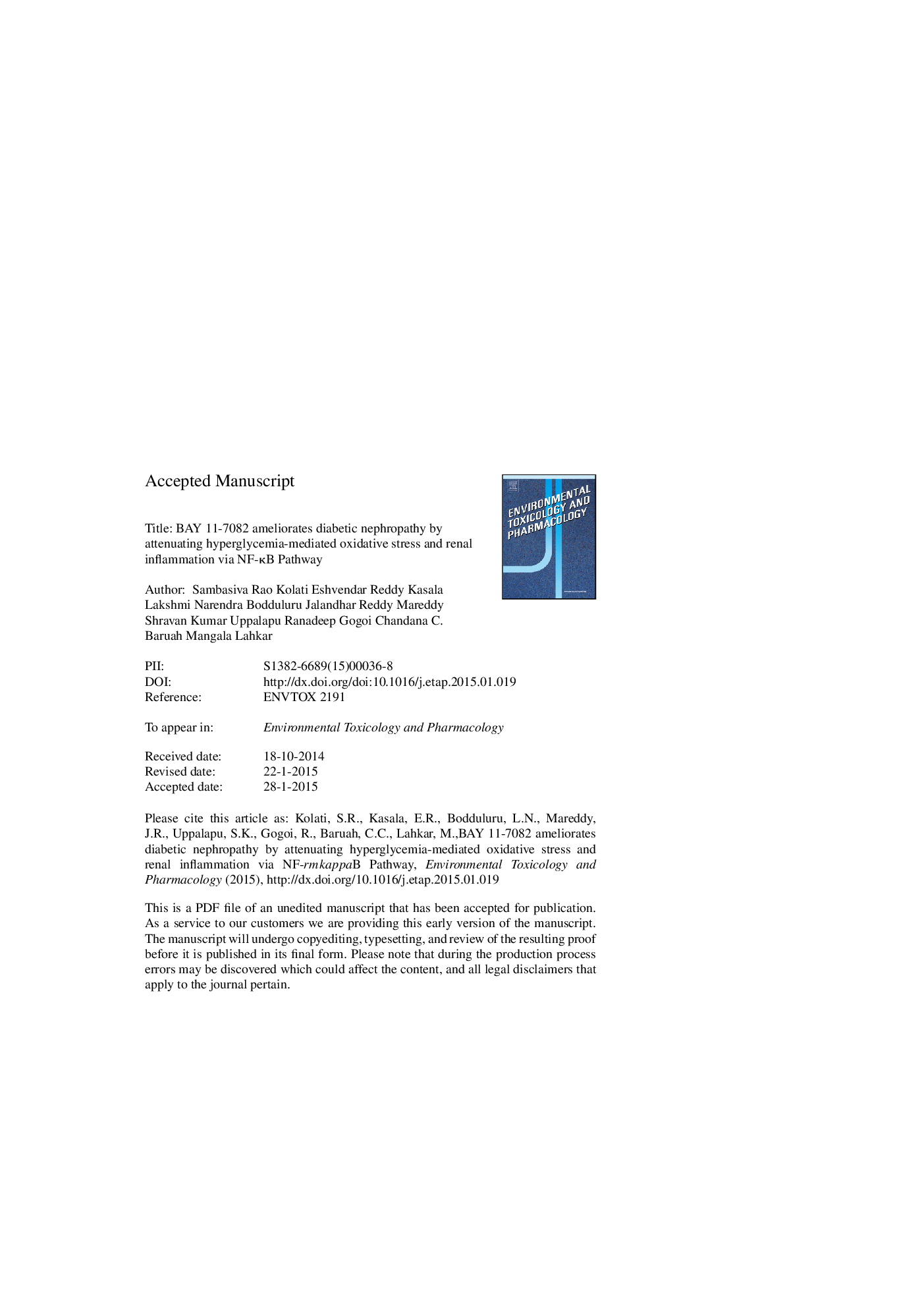| Article ID | Journal | Published Year | Pages | File Type |
|---|---|---|---|---|
| 5848815 | Environmental Toxicology and Pharmacology | 2015 | 21 Pages |
Abstract
Diabetic nephropathy is a serious microvascular complication for patients associated with diabetes mellitus. Recent studies have suggested that NF-κB is the main transcription factor for the inflammatory response mediated progression of diabetic nephropathy. Hence, the present study is hypothesized to explore the renoprotective nature of BAY 11-7082 an IκB phosphorylation inhibitor on Streptozotocin (STZ) induced diabetic nephropathy in Sprague-Dawley (SD) rats. Male SD rats were divided into five groups, group I sham control, group II drug control, group III diabetic control (STZ 50 mg/kg), group IV and V are test drug groups to which a single dose of STZ 50 mg/kg was injected initially and later received BAY 11-7082 1 mg/kg and 3 mg/kg, respectively from 5th to 8th week. Eight weeks after STZ injection, diabetic rats exhibited significant renal dysfunction, as evidenced by reduced creatinine clearance, increased blood glucose, urea nitrogen and creatinine, which were reversed to near normal by BAY 11-7082. BAY 11-7082 treated rats showed significant improvement in the decreased enzymatic antioxidant SOD, non-enzymatic antioxidant GSH levels, and elevated lipid peroxidation and nitric oxide levels as observed in the diabetic rats. BAY 11-7082 treatment was found to significantly recover kidney histological architecture in the diabetic rats. Altered levels of inflammatory cytokines like TNF-α, IL-1β, IL-6 and nuclear transcriptional factor subunit NF-κB p65 were reverted to the normal level upon treatment with BAY 11-7082. Our results suggest that by limiting the activation of NF-κB, thereby reducing the expression of inflammatory cytokines and by inhibiting the oxidative damage BAY 11-7082 protect the rats against diabetic nephropathy.
Related Topics
Life Sciences
Environmental Science
Health, Toxicology and Mutagenesis
Authors
Sambasiva Rao Kolati, Eshvendar Reddy Kasala, Lakshmi Narendra Bodduluru, Jalandhar Reddy Mahareddy, Shravan Kumar Uppulapu, Ranadeep Gogoi, Chandana C. Barua, Mangala Lahkar,
